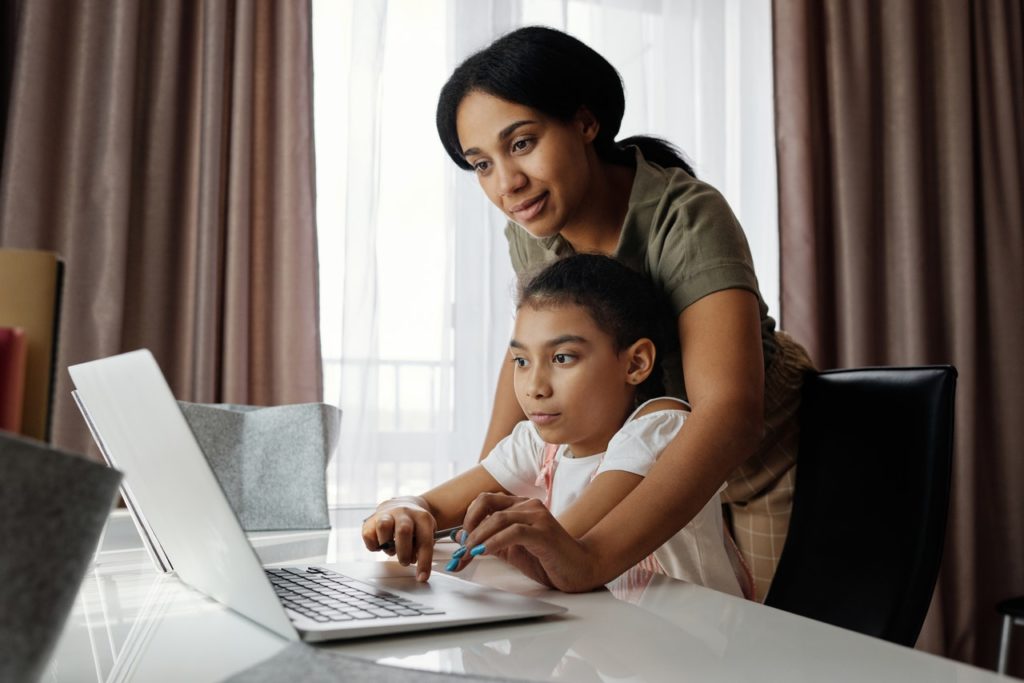Before the pandemic, kids doing home school are considered the exception rather than the norm. Parents often make the conscious decision not to send their kids to a formal school due to several reasons such as bullying and learning disability.
In many ways, such an arrangement works like magic for kids and their parents; however, there are some factors like lack of access to research and learning materials that could hinder adequate learning for home-schooled kids.
With COVID-19, remote learning became the norm and not the exception, which is why parents and kids everywhere have been struggling to find ways to achieve the most conducive learning setup at home.
If you’re among the millions of American parents who are finding ways to make your kids’ remote learning experience most convenient and productive, here are six tips you should explore soon:
Designate a quiet space for them.
Your kids should have their own quiet nook inside your home where they can study without unnecessary distractions. Dogs barking, cars passing and honking, and next-door neighbors’ loud music playing — such kinds of noise could easily make your kids lose their focus.
If possible, you should ensure that their study area is properly soundproofed using inexpensive materials that you can easily source and install. This way, your kids can study and learn in relative quiet to optimize their distance learning experience.
Ensure comfortable indoor temperatures.
Learners are proven to perform better when they’re studying in a well-ventilated area. With this, you must ensure that your home’s indoor temperatures are properly regulated during your kids’ study hours.
You should hire a licensed heating and air conditioning maintenance contractor to keep your home’s ventilation and climate control system in tip-top shape. If you have the budget for it, invest in a smart thermostat that would allow you to program the temperature settings once, so you won’t have to manually adjust them every day. This will make life convenient for you, plus help you lower your monthly power consumption.
Provide all the required remote learning devices and facilities.
While they may be cost-prohibitive for many parents, they really have to find ways to provide the required remote learning devices and facilities such as a personal computer, smartphone, tablet, and stable internet connection.
In most cases, a smartphone with basic communication apps such as Zoom, Google Meet, and FaceTime are more than enough, so parents won’t have to buy an expensive laptop or tablet device. If there are several of you sharing one internet connection, just discipline yourselves and work out a schedule to ensure that not everyone is using the same bandwidth simultaneously. This will optimize connection speed and make learning (or working) more convenient for everyone in the household.
Help them with their distance learning schedule.

Keeping your kids fully aware of their distance learning deliverables while allowing them to enjoy normal kids’ stuff (such as playing or having leisure activities) is an important technique to maximize their remote learning potential. You can help achieve this by sitting with them and drawing a daily schedule that includes the time allotment for their lessons, leisure activities, and house chores.
With a properly laid out and observed distance learning timetable, your kids won’t be stressed out meeting their academic obligations in relation to their household tasks and their playtime.
Assist them with their lessons, but don’t spoon-feed.
Your kids’ teachers can only do so much to help all of their students as regards their lessons. Parents, in this case, have the duty to render assistance in ensuring that their kids will actually learn at home.
With this, you have to find time to sit down with your kids and check whether they need help with any of their lessons. You can guide them on how to arrive at the answers to the questions contained in their lessons but do not actually give them the answers. Spoon feeding answers to your kids will be one of the biggest mistakes you could do, as it could teach them to rely on your help and not on their personal capacity.
Provide them with their comfort food.
Good food stimulates the brain to perform well, which is why you should find ways to periodically serve your kids desserts or meals that they love. If you are gifted with culinary skills, this should never be a problem. If you are not, then there’s always the supermarket or delivery services to turn to. Great-tasting food serve as extrinsic motivators to kids — a form of reward for studying well.
Your kids should see distance learning as a challenge and not as a burden. With these techniques, you make everything convenient and enjoyable for them, so they can make the most out of their remote learning experience.



















